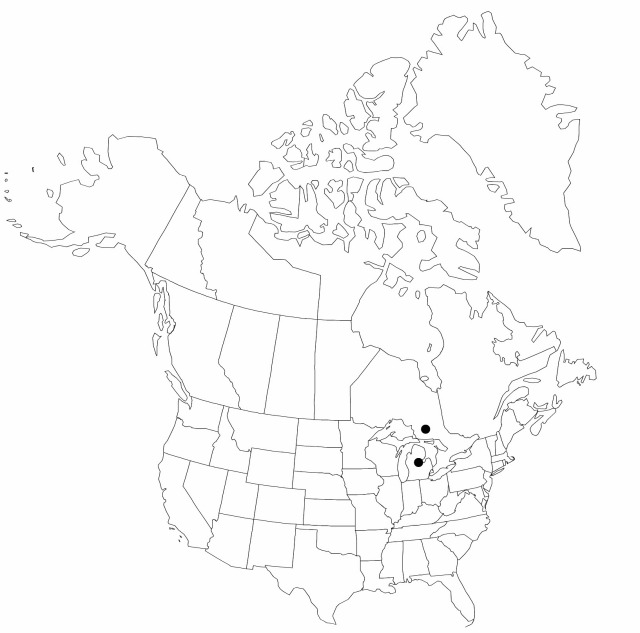Carex scirpoidea subsp. convoluta
Novon 7: 355. 1998.
Plants cespitose; rhizomes inconspicuous. Culms erect, (9.2–) 19.5–35(–38) cm. Leaves: sheaths and bases from previous year’s leaves absent; blades narrowly V-shaped in cross section, to 23 cm × 1.8 mm, widest leaves of pistillate culm less than 1.5 mm wide. Scales ovate, 2.4 × 1.2 mm. Perigynia ovate, 1.5–2.6 × 1–1.2 mm, less than or equal to 2.5 times long as wide, body tightly enveloping achene for entire length and width. Achenes 1–1.5 × 0.6–0.9 mm.
Phenology: Fruiting early Jun–Sep.
Habitat: Prairie pavement barrens
Elevation: 200 m
Discussion
Carex scirpoidea subsp. convoluta is the most geographically restricted of the subspecies and is distinguished by narrowly V-shaped leaves, especially of the flowering shoot, a strongly cespitose habit, and conspicuously more flowering shoots per plant than other subspecies.
Selected References
None.

